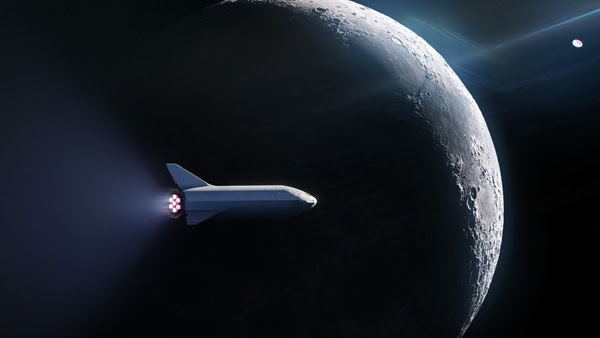NASA is looking for a solution to build at the lowest cost landing strips on the Moon that would avoid the projection of dust and particles, knowing that the transport of heavy equipment from Earth to the Moon represents a prohibitive cost.
The phys.org site has taken the elements of a study from the University of Central Florida in Orlando published in the journal New Space which presents a solution, developed in collaboration with the company Cislune, based on the use of microwaves to melt the lunar soil before submitting it to transformations to accommodate landing strips. T
hanks to this process, the lunar soil could accommodate spacecraft in preparation for future lunar missions. Within the framework of the Artemis project, the United States wishes to return to the lunar soil by 2025. The Artemis III mission will then be the first of a series which should make it possible to establish a colony on the Moon and exploit its resources.
The co-author of the study Phil Metzger believes that the return to the Moon is of strategic importance for the United States, especially given the high economic value of space resources, such as helium-3 for example. The possibility of avoiding having to transport material to build the landing strips would thus make substantial savings, the cost of transporting material between the Earth and the Moon being estimated at about 100,000 dollars per kilogram.
The use of microwaves would make the lunar soil more absorbent. It will be a question of bringing up to the lunar surface the most microwaveable particles thanks to a technology using magnetic fields. Rovers could then take over the process of building the tracks. Erik Franks, Cislune’s founder and CEO, explains that construction principles on the Moon, and similarly on Mars, are very different from those used on Earth where concrete and steel are widely available due to the abundance of natural resources such as water, air and coal. In space, air and water are extremely precious resources and some natural resources are unavailable, so it will be necessary to find new construction processes.
This search for solutions includes the use of microwaves and soil enrichment. Researchers have simulated the characteristics of the lunar soil to perform microwave and magnetic sensitivity tests and to evaluate the costs of different landing mat construction methods. The new methods of construction of landing strips and equipment will have to take into account the resources that could be brought to the Moon.



Comment here